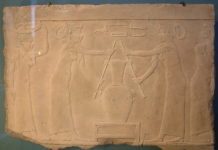
For decades and even centuries, the human race has been interested in pirates, they are portrayed in movies, in books, and children pretend play that they are pirates and off on spectacular adventures. Yet it all seems surreal, which stems from the fact that although pirates have existed and do exist in various forms today, the way people remember them is the way pirates have evolved through the years. I consider the “pirate phenomena ” a prime example of how inter-connected literature and history is, but more importantly how our conception of an idea, or a piece of history, may get construed by the way writers decide to use information on historical events.
In 1724 a book appeared in a small English Bookshop, it was not a big book, but rather small. Yet it grabbed its audience and held it in suspense with the information inside. A General History of the Robberies and Murders of the most notorious Pyrates, written by an author not well known but he is know, Captain Charles Johnson. Mystery surrounds the book, it did in 1724, and it stills remain today, and that mystery lies in who is the author Captain Charles Johnson. Some thought it was Daniel Defoe, the author of Robinson Crusoe but has been disproved through the years. Majorities of the facts in Captain Johnson’s book have substantiated from records of the pirates held within its pages. The book talks of the most notorious of pirates, their early lives, their career and their doom. Speculation holds that maybe the author was a pirate, or insider himself, but no proof can be found to hold up that theory. Other maintain that perhaps he got majority of his information by what had been published in the British newspaper, and then informants or observation of some kind backed it up. Whatever the case, revisions and expansions have been made on this book through the years, and is a good in-depth resource to learn about the world of Pirates.
A word study of pirates may help in understanding why I say that pirates exist still today – not in the same form necessarily but in certain form. From Webster’s Comprehensive Dictionary, International Edition we find that the word pirate, is a noun and has three definitions, the first one is defines it as “a rover and robber on the high seas.” The second definition states that ” a vessel engaged in piracy”, and the third states it like this: “A person who appropriates without right the work of another.” After reading these definitions, I looked up another word – Piracy. Piracy is also a noun, and has 2 definitions. The first simply says, “robbery on the high seas.” The second one helps show why it is still around today – “the unauthorized publication, reproduction, or use of another’s invention, idea or literary creation.” In the age of technology advancements, and software, piracy is a big problem, taking of one person’s work and giving it to others when it is not our right to give. By looking at these definitions, you wonder why people are fascinated with the world of pirates if it was not a nice thing to be done. They robbed ships, killed people and created terror on the seas, from the Caribbean to England and all in between.
In the case of pirates and the evolution in literature to obscure our vision of true facts, its helpful to look at what occurred after the book was published in 1724. The ball started rolling when Captain Johnson described the pirates – he presented facts but presentation often changes how information is received. It can be straight forward and dry, or interesting and riveting, a historical account that you just can not stop reading because the author’s use of words have spun its web around you. Such is the case here, most agree that it was with the publication of Captain Johnson’s book that the modern perception of pirates was born.
“Not a long while ago it was the custom to smile indulgently at Johnson’s History as being a mixture of fact and fancy, but from time to time old documents have been rescued from some dusty nook of oblivion which have proved his good faith. Many of the incidents looked upon as imaginary are found all to be absolutely accurate in date and circumstance.” (IX – Introduction to Johnson’s Book)
Many fictitious books have appeared since the time of the books first appearance. Sir Walter Scott wrote a novel entitled The Pirate, which appeared in 1821 and was based on the life of the pirate John Smith. This particular book is not popular in modern culture, but was in the day it was written.
One book though is considered a classic, its read in schools across the world, it has been made into a movie, and even the Muppets decided to make a movie based on this fictitious classic; the book – Treasure Island, by Robert Louis Stevenson. It captivated audiences and still captivates them, the story of Long John Silver, and the gold, the English boy, and the ship to follow the treasure map to the gold, the wooden peg leg, and his parrot. To me its this story that comes to mind when I hear pirates, and think of the age when pirates were around. One interesting fact I ran across was that even though Treasure Island is fictitious, it is based on facts. Seamen were marooned, there were one-legged pirates, and parrots were their friends. However two key pieces that are associated with the world of pirates is not true – that of buried treasure and the map unto which you find it.
There is one other piece of work I want to mention, that draws from the historical account Captain Johnson provides, though most of the presentation is fictitious of the pirate character, it does stem from having read the accounts within the pages of the book. It is the story of a flying boy, a land in which you do not grow up, and a never-ending battle between a pirate and this lad with his followers. It has been a Broadway musical and a very popular Classic Disney movie – Peter Pay by J.M. Barrie.
What do we believe, what is true and what is not. Perhaps over time, the true fact can be sifted from the fiction. But one idea does remain – the simplicity that when presented right, literature can be the best tool in telling a story, however partially correct to an audience, to so intrigue them, that they search out the truth.







